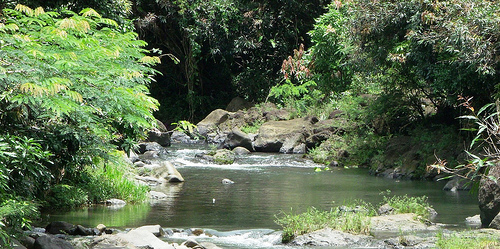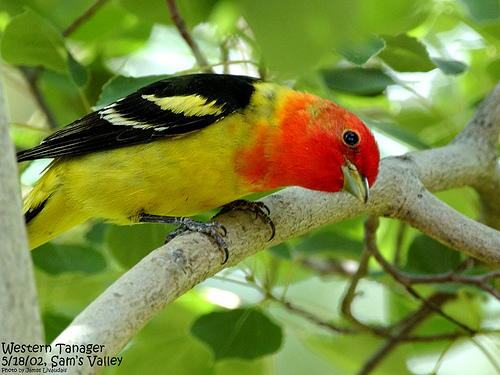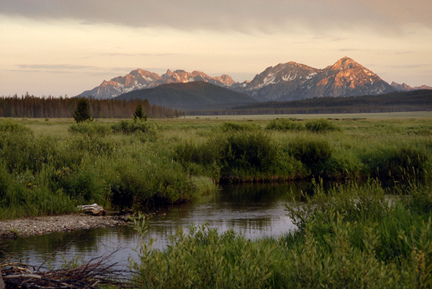
El Yunque National Forest in Puerto Rico. At 28,000 acres, it’s the smallest national forest and the only tropical rain forest the Forest Service owns, boasting the greatest biodiversity among national forests.
This post is part of the Science Tuesday feature series on the USDA blog. Check back each week as we showcase stories and news from USDA’s rich science and research portfolio.
El Yunque National Forest in Puerto Rico is unique for the U.S. Forest Service. At 28,000 acres, it’s the smallest national forest and the only tropical rain forest managed by the Forest Service, boasting the greatest biodiversity among national forests. Read more »

Wildflower displays of blue Wasatch Penstemon and white Nuttall’s linanthus wildflowers bloom in the subalpine meadows of Albion Basin on the Uinta-Wasatch-Cache National Forest from mid-July through early August.
As spring begins across the nation, fields are turning green – and pastel pink, flaming scarlet, electric orange, brilliant yellow, deep violet and florescent blue. Wildflowers are abloom!
This year, the Forest Service has released an updated wildflower map with 317 viewing areas to choose from on America’s national forests and grasslands. In addition to locations, information is also provided on the best time for peak viewing. Read more »
An estimated 4,000 people in the San Francisco Bay Area recently celebrated the return of millions of migrating birds as part of the 16th annual Flyway Festival held on Mare Island in Vallejo, Calif. California national forests act as a vital habitat link in the Pacific Flyway, a major north-south route of travel for birds migrating every year from Alaska to Patagonia.

The Western tanager is a striking colored bird which is found in mixed conifer forests occurring on California forests. Photo courtesy of Jim Livaudais
The birds travel some or all of this distance both in the spring and in the fall, following food sources heading to breeding grounds overwintering sites. Many of the bird’s native habitats such as oak woodlands, riparian areas and mixed conifer forests are found in the golden state’s national forests. Read more »
A new baby bald eagle will soon begin his flight lessons on the San Bernardino National Forest as the first recorded chick to be successfully nested in recent times near Big Bear Lake.

Baby bald eagle Jack, right, in his nest. Photo credit: Robin Eliason, District Wildlife Biologist, San Bernardino National Forest, Mountaintop Ranger District
The chick was first spotted Feb. 21 by Forest Service wildlife biologist Marc Stamer while leading a school field trip. “I was shocked to look through the spotting scope and see a bald eagle chick sitting up in the nest,” said Stamer. “The students, teachers and parents were as excited to see a baby eagle as I was! It was a first for all of us!” Read more »
Around 1,500 Jasper and Putnam County elementary students in Georgia got their hands dirty planting trees while meeting Olympic athletes at the Kids4Trees program sponsored by the Forest Service. The event was the first of 35 planned across the nation for 2012.
Bryan Jacobs, an inspiring two-time Olympic weightlifter, was among three Olympians who visited with students. After learning what it takes to help both trees and young spirits thrive, the students planted trees at their schools and potted their own small trees to take home. Read more »
When the first Europeans settled in what is now the United States, they found a continent of extensive wildlands. In less than 500 years, the undeveloped nature of these wildlands has been reduced significantly. As they became increasingly scarce and a fledgling conservation movement lost natural treasures like Yosemite’s Hetch Hetchy Valley to development, Americans began to appreciate their value.

View of the Sawtooth Range in Idaho. U.S. Forest Service photo.
With passage of the Wilderness Act of 1964, a new course in history was chartered — to preserve some of the country’s last remaining wild places and protect their natural processes and values from development. Read more »





